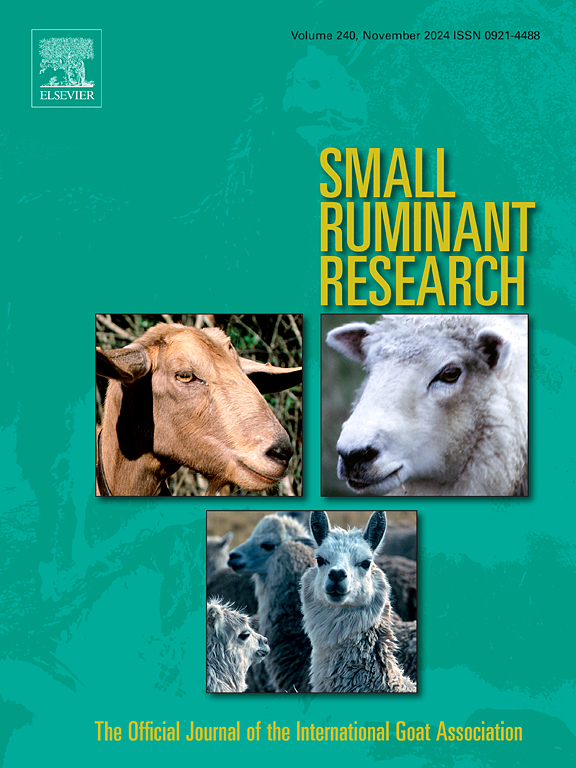从阿根廷西北部当地生产商的牛奶中提取和评价山羊奶粉
IF 1.6
3区 农林科学
Q2 AGRICULTURE, DAIRY & ANIMAL SCIENCE
引用次数: 0
摘要
在阿根廷,液态羊奶的生产是一项重要的经济和文化活动,特别是在萨尔塔省,那里的生产是手工的。将这种原料多样化制成粉状产品很重要,因为它可以延长其保质期。此外,由于其营养和功能特性,其消费量正在增长。本研究旨在制备转基因粉末,并对其理化、功能和重构特性进行评价。巴氏灭菌的转基因样品在不同的总固体浓度下处理(GM1: 13 %;GM2: 25 %;GM3: 40 %;GM4: 45 %)。采用喷雾干燥法对样品进行脱水。水分、蛋白质、脂肪、乳糖、灰分、酸度、水活度、颜色、体积和密度、卡尔和豪斯纳指数、不溶性指数、溶解度、润湿性和分散性进行了分析。数据采用方差分析和多变量分析进行统计学分析。GM3和GM4样品显示出更高的水分、脂肪、灰分和酸度,亮度更高,颜色倾向于黄色。GM1和GM2样品表现出不可接受的功能和重构性质。结果表明,在一定的干燥条件下,固体浓度对奶粉的性能有显著影响。喷雾干燥得到的山羊奶粉的性质随总固体浓度和干燥条件的不同而变化。固体浓度越高,样品的物理化学和功能特性越好。该研究为优化喷雾干燥条件和提高山羊奶质量提供了依据,为该地区提供了一种具有营养价值和适销对路的替代产品。本文章由计算机程序翻译,如有差异,请以英文原文为准。
Obtaining and evaluating goat milk powder derived from milk of local producers in northwestern Argentina
In Argentina, the production of fluid goat milk (GM) is an important economic and cultural activity, especially in Salta Province, where the production is artisanal. Diversifying this raw material into a powdered product is important because it increases its shelf life. In addition, its consumption is growing due to its nutritional and functional properties. This study aimed to obtain GM powder and evaluate its physicochemical, functional, and reconstitution characteristics. Pasteurized GM samples were processed at different total solids concentrations (GM1: 13 %; GM2: 25 %; GM3: 40 %; and GM4: 45 %). The samples were dehydrated by spray drying. Moisture, protein, fat, lactose, ash, acidity, water activity, color, bulk and tapped density, Carr and Hausner index, insolubility index, solubility, wettability, and dispersibility were analyzed. Data were statistically analyzed using ANOVA and multivariate analysis. GM3 and GM4 samples showed higher moisture, fat, ash, and acidity, as well as greater brightness and a tendency toward a yellow color. GM1 and GM2 samples exhibited unacceptable functional and reconstitution properties. The results showed that under certain drying conditions, the solid concentration significantly influenced the properties of powdered milk. The powdered goat milk obtained by spray drying showed variability in its properties depending on the concentration of total solids and drying conditions. Samples with higher solids concentrations exhibited better physicochemical and functional characteristics. This study provides a basis for optimizing spray drying conditions and improving the quality of powdered goat milk, offering a nutritionally valuable and marketable alternative in the region.
求助全文
通过发布文献求助,成功后即可免费获取论文全文。
去求助
来源期刊

Small Ruminant Research
农林科学-奶制品与动物科学
CiteScore
3.10
自引率
11.10%
发文量
210
审稿时长
12.5 weeks
期刊介绍:
Small Ruminant Research publishes original, basic and applied research articles, technical notes, and review articles on research relating to goats, sheep, deer, the New World camelids llama, alpaca, vicuna and guanaco, and the Old World camels.
Topics covered include nutrition, physiology, anatomy, genetics, microbiology, ethology, product technology, socio-economics, management, sustainability and environment, veterinary medicine and husbandry engineering.
 求助内容:
求助内容: 应助结果提醒方式:
应助结果提醒方式:


